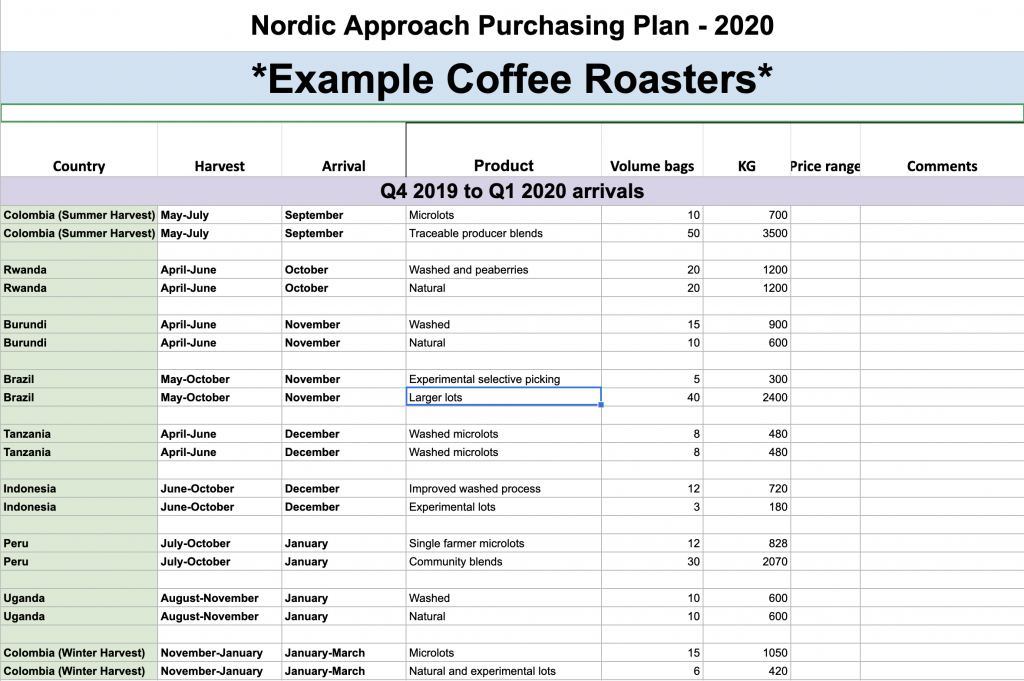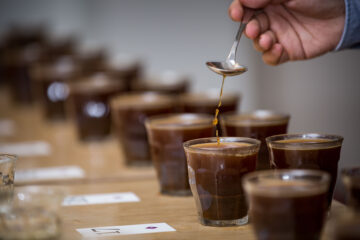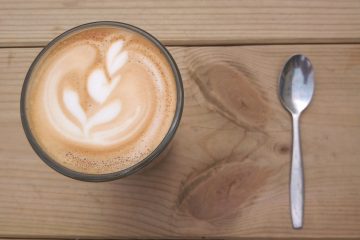For new roasteries, one of the toughest questions, after “which roaster should I buy?” is “what should go on my menu?”
The answer will be different for everybody, depending on your customers, your location, and your capacity. To help decide what is best for you, we asked some of our customers how they tackle this question.
How do you choose which coffees to put on your menu?
The first step to answering this question is understanding your market.
“It is important to know what your customers are looking for,” said Andrew Lee, Founder, Green Buyer and Roaster for VCR in Malaysia. “You have to know what they are willing to pay, what flavours they are open to. With that in mind, it’s important to talk to suppliers in the language that reflects your customer’s needs.”
Fergus Brown, Founder & Green Buyer of Roasted Brown in Ireland takes a different approach. “I don’t have the ability to sell a coffee that doesn’t really excite me,” he said, so he starts there. “If you buy coffee from Roasted Brown you’re buying coffee that Ferg likes, so I typically choose what I think tastes best out of what’s available.”
How many coffees should you put on your menu
This number depends on so many factors and is likely to change as your business grows and develops. To get started, there are several different approaches to deciding on a good number for your business.
Keep it simple
Andrew from VCR likes to keep his menu manageable. “Each coffee takes a bit of profiling. If you’re always changing coffees then you’re spending most of your time profiling, and your poor customers are the guinea pigs,” he said.
A mix of flavour profiles
Other roasteries decide based on flavour profiles. Silja Löfgren, Head Roaster for Good Life Coffee Roasters in Finland, aims to have five to six different coffees. “We try to keep the flavour profiles stable so you can always get a fruity, juicy or floral coffee, plus a heavier body profile, but they will come from different origins according the seasons.”
A mix of origins
Another approach is to consider the mix of origins. Lajos Horvath, Co-Owner and Green Buyer of Casino Mocca in Hungary, aims to keep a mix of regions on his menu. “I like two Americans and two Africans at the same time,” he said.
A mix of roast profiles
Single Estate Coffee Roasters in The Netherlands have a more extensive menu of nine to ten coffees at any one time. “I try not to focus too hard on a spread of flavour profiles, but a good spread of espresso and filter roasts,” Head of Coffee, Patrick Groenewold, explains.
A mix of price points
“Right now our range is between eight and ten coffees at one time,” said Scott Tedder, Green Buyer, Roaster & QA Manager for Bonanza Coffee Roasters, Germany. “Now that we have a wholesale team, we noticed that we need a price range of low, medium and high, plus some really high ones.”
Meet your customers needs
Again, you are likely to find the answer by talking to your customers. The menu at VCR evolved to meet the needs of cafes in Malaysia who are currently struggling in an economic downturn. “I realised my job was to solve their problem,” Andrew said, “to source the best coffee I could find for the price they would pay.”
How do you plan your buying?
Once you know how many coffees, and what profiles, origins and price points you need, the next step is to plan your buying to ensure you have a steady supply of green coffee all year.
Fergus Brown of Roasted Brown has some customers who like to buy the same profiles all year round, and Brazil is a good option for this segment of the market. “The [Brazil] coffees we buy are super stable, I like how they’re dried, and they can hold up for 14 to 15 months without much deterioration in flavour.”
Jamie Isetts, Director of Green Coffee, Merit Coffee, USA offers the same coffees for milk-based espresso and decaf year-round. These coffees come from Huila, Colombia, which has multiple harvests a year, ensuring a steady supply.
Otherwise they like to keep the menu rotating pretty frequently. “I aim for six weeks on coffees we use for pour over and solo espresso — usually more exotic profiles — and ten weeks on our house filter. We sometimes offer small features for 2-3 weeks,” she said.
At Bonanza, they offer a line of higher-quality coffees which they keep seasonal, even when it’s challenging. “Everyone in the shop nearly killed me in May because we only had Rwandans,” Scott Tedder from Bonanza revealed. These were the best coffees at the time, he explained, and within this origin there was a great deal of variety in processing methods and flavour profiles.
Know the seasons
Whether you aim for the same profiles all year round, or a frequent mix, the key to planning is to knowing the harvest periods in each origin. This can be challenging for a new business.
“We’re a very small operation,” said Fergus Brown, “and it has taken us a bit of time to come to grips with when harvest happens and how long it takes from harvest to get actual coffee into our roastery. It’s only since I’ve started going on origin trips that I have started to get my head around it.”
Know the shelf life of your coffee
It’s also important to know when the coffee will be tasting best. For some origins, Ethiopia and Kenya especially, that can be many months after the coffee arrives in the warehouse.
“Some of the Ethiopians I buy open up very late, and I buy them with that purpose,” Patrick from Single Estate Coffee Roasters said. “That’s one of the most difficult things in coffee buying, is tasting the potential of a coffee and knowing it still has time to open up and grow in flavour.”
Fergus agrees. “We had to learn what’s in season, and the best time to roast.” For Roasted Brown, that means ignoring the pressure to be the first with Kenyans on their menu. “We will buy Kenyan coffees pretty long and make sure they bring us into the next harvest. We had Kenyan coffee on in June that we bought last year. It wasn’t current stock, but that’s when it tasted best.”
Plan for the quiet months
In the first months of the year can be tough to keep some variety on your menu, when fewer fresh crops are available.
A good option is to look to evergreen coffees, those you can buy all year round. “I like Colombia because they have two crops in a year so you can always have something,” said Patrick from Single Estate Coffee Roasters.
If you want to keep your menu seasonal, there are several African origins whose coffee arrive during these months. “We have Burundi, Rwanda, Tanzania,” said Lajos of Casino Mocca. “We bought a lot of Tanzanian this year and we just sold the last bags [in June].”
Then there are those long lasting coffees mentioned above. “Occasionally I will carry over coffees from origins like Ethiopia and Kenya into this time of year,” Jamie from Merit Coffee said. “but I really put the microscope on the quality of drying and other factors related to ageing.”
Pre-contracting vs Spot
Pre-contracting your coffees is a great way to secure the best lots, and save money. However not all roasteries are in a position to do that degree of planning. Others like to mix pre-booked coffees with spot to balance the cost savings with flexibility.
All Spot
Silja from Good Life Coffee Roasters buys all their coffees spot. “We are still building things up,” she explains. “In the future we will pre-book, when our business is more stable.” Silja still plans her menu and reserves the spot volumes she needs for the coming months. “I try to plan six months in advance and I factor in the volumes we might need, for example in the Christmas season we roast higher volumes, plus I consider the season for the different coffee origins.”
All pre-contracted
Fergus of Roasted Brown pre-contracts all his coffees. “It’s for peace of mind, having more control, knowing that it’s done. We also find it’s more cost effective and we get first pick on the nicer coffees.”
A mix
For Bonanza, it depends on the price range. “For the lower price range we pre-contract. It should be planned to the point that we don’t need to think about them,” Scott said. For the high-end lots, “we don’t really plan for those but we also don’t buy enough of them that we need to plan.”
Jamie from Merit pre-contracts most of their coffee but likes to use spot offer to discover new coffees. “I like buying a coffee spot first to see its potential as something I can pre-contract in future harvests. I also use spot to fill in when I’m short on my projections.”
Seek expert advice
When in doubt, rely on your sales rep. They know the harvest cycles, when to expect coffees from different origins, and can give you an indication of the best time to roast individual lots. Discuss your goals with them and they can help you make a plan for your menu.
As Fergus Brown said, when in doubt, “we email Alec and say ‘tell us what to buy when.’”




0 Comments